
This page is intentionally left blank.


This page is intentionally left blank.
Presented by The Kreeger Museum and The Washington Print Club
October 26th, 2024–February 1st, 2025 The Kreeger Museum


About The Collaborative
The Washington Print Club
Curator’s Essay
Rush Baker IV
Leon Berkowitz
Zoë Charlton
William Christenberry
Wesley Clark
Steven Cushner
Gene Davis
Werner Drewes
Cheryl Edwards
Edgar Endress
Mary Early
Rosemary Fiet Covey
Helen Frederick
Sam Gilliam
Susan Goldman
Tom Green
Mike Hagan
Mira Hecht
James Hilleary
Hedieh Javanschir Ilchi
Martha Jackson Jarvis
Lois Mailou Jones
Jacob Kainen
Kevin MacDonald
linn meyers
Jiha Moon
Cory Oberndorfer
Terry Parmlee
Jefferson Pinder
Michael Platt
Carol Reed
Charles Ritchie
Rozeal
Soledad Salamé
Joyce J. Scott
Luis Silva
Elzbieta Sikorska
Molly Springfield
Eve Stockton
Renée Stout
Di Bagley Stovall
Prentiss Taylor
Caitlin Teal Price
Ben Tolman
Andrea Way
James Lesesne Wells
Wilmer Wilson IV
Julie Wolfe
Sue Wrbican
“A city without an artistic landscape is not a city.”
David Lloyd Kreeger February 1980, Washington Dossier
David and Carmen Kreeger were devoted patrons of the arts and the Washington, DC arts community. They supported countless Washington-area artists including Sam Gilliam, Simmie Knox, Thomas Downing, Gene Davis, Morris Louis, Ed McGowin, and Albert Stadler, purchasing their work at the Corcoran Gallery of Art biennials, area galleries, and directly from artists in the 1960s and early 1970s. The Collaborative is a guest artist exhibition program developed to support Washington-area artists.
We are thrilled to be in partnership with arts organizations across the city to present work of contemporary Washington-area artists. The Collaborative furthers our mission by supporting and spotlighting the immense talent of visual and performing artists in our city. We are honored to champion the work of these artists and provide many of them the opportunity to present their work in a museum for the first time.
Helen Chason Director
The Kreeger Museum
The Washington Print Club [WPC] was founded in 1964 by twelve collectors, business leaders, and museum professionals.
The WPC aims to nurture a greater understanding and appreciation of the variety of often complex and interwoven printmaking processes. Moreover, prints and other works on paper often are more affordable and therefore a gateway for art lovers to build a collection.
The Washington Print Club welcomes print enthusiasts of all sorts—collectors, artists, scholars and students—to apply for membership.
Unlike some other print clubs, the WPC is a totally volunteer driven organization without official commitment to any of the numerous local museums and arts institutions. Its day-to-day operation is overseen by a purely volunteer board of directors. A volunteer advisory board is available to assist the directors when requested.
To learn more about The Washington Print Club, please visit their website.
The DMV Collects the DMV celebrates the 60th anniversary of the Washington Print Club (WPC) by presenting an encapsulated history of regional artists and institutions as selected from local members’ collections. Forty-nine artists who lived or built their careers in the District-Maryland-Virginia region are represented by works on paper, ranging from drawing, painting, and photography to lithography, intaglio, woodcut, screenprints and other types of print-making techniques. Artists were chosen to speak to each other across time.
The through-lines of the exhibition are the exploration of Black identity and the African diaspora, the impact of the Washington Color School, and the current multiculturalism of artists working in the DMV. The early modernist artists, Werner Drewes, Prentiss Taylor, Lois Mailou Jones, and James Lesesne Wells were initially associated with the Bauhaus movement and Harlem Renaissance, before settling in D.C. Mid-twentieth century artists formed the Washington Color School, the most significant art movement associated with our region. Contemporary artists represent the global diversity that defines our DMV today.
This multigenerational assembly of artists established and were supported by key educational institutions and print workshops. The Corcoran School of Art (which became the Corcoran College of Art + Design in 1999), Howard University and Maryland Institute College of Art (MICA) provided valuable training, employment, and community cohesion for decades. No fewer than five important print workshops were established by artists included in the exhibition: The Workshop Inc. by Lou and Di Stovall, Pyramid Atlantic by Helen Frederick, Handprint Workshop International by Dennis O’Neil, who taught at the Corcoran and printed the work of several artists in the exhibit, Lily Press by Susan J. Goldman, and Sol Print Studio by Soledad Salamé.
The Kreeger Museum is an ideal setting to highlight the role that collectors play in supporting an art community. Like WPC members, collectors David and Carmen Kreeger offered validation and exposure to the artists they collect, as well as crucial financial patronage. In their lifetimes, the Kreegers both held leadership roles at the Corcoran Gallery of Art, the Museum of African Art, and performing art institutions including Arena Stage, Gala Theater, and the the National Symphony Orchestra. Within the WPC are many artist members, who have submitted each other’s work to this exhibition. Throughout its history, the WPC has drawn on the expertise of printmakers such as Prentiss Taylor, Jacob Kainen, Terry Parmelee, Helen Frederick and Susan J. Goldman to facilitate the study, collection and love of works on paper. Often artists do not personally know the collectors of their work, and vice versa. This exhibition is intended to bring those two vital components of the art community together, recognizing the symbiotic and essential roles of each.
The earliest artists included in the exhibition worked within the avant-garde movements of European Modernism and the Harlem Renaissance. Werner Drewes (1899-1985) studied at both Bauhaus schools in Weimar and Dessau, Germany before immigrating to the United States in 1930. He was a founding member of the organization American Abstract Artists in New York City. After teaching at Washington University in St. Louis, he continued his career in Reston, Virginia. Born in New York City, Jacob Kainen (1909-2001) began his long and varied career working as a WPA artist in the 1930s. After moving to Washington, he was a curator of prints and drawings for nearly thirty years at the U.S. National Museum (later renamed the Smithsonian Museum of American History,) while achieving recognition as an Abstract Expressionist painter and printmaker.
Born in D.C., Prentiss Taylor (1907-1991), wore an impressive array of hats: Master lithographer, art therapist at St. Elizabeth’s Hospital, close friends with Harlem Renaissance poet Langston Hughes, romantic partner with composer Aaron Copeland, painting professor at American University and a founding member of the WPC. Taylor’s set of lithographs Scottsboro Limited (1932) illustrates Langston Hughes’s eponymous poems and play, which eulogized nine Black boys falsely accused of assaulting two white girls in an infamous case of racial persecution.
As teachers and connectors to the wider global art community, James Lesesne Wells (1902-1993) and Lois Mailou Jones (1905-1998) made critical contributions to this phase of Black Washington D.C. art history. Both taught at Howard University for decades, introducing generations of students to African art. Both also had ties to the Afro-Caribbean diaspora. Wells’ grandfather was born in Martinique and Jones was married to Haitian painter Louis Vergniaud Pierre-Noël. Their primary color palettes and simplified, abstracted forms in Vase of Flowers and Untitled (Dancers with Band), respectively, demonstrate the influence of ancestral African tribal art in the first flourishing of African American painting.
The evolution of African American cultural identity is one of the strongest through-lines in the history of DMV art. Washington’s population boomed during and after World War II with the expansion of the federal government. The 1968 riots following Martin Luther King Jr.’s assassination also had a major impact on D.C.’s neighborhoods and racial distribution. Paralleling other urban centers’ civil rights movements, D.C. Black artists engaged their community through visual art expression such as inexpensive, easily distributed silkscreened prints and posters, such as those printed in Lou Stovall’s studio The Workshop Inc., founded in 1968. The essentialism of Black art that emerged during the turbulent 1960s and 1970s can be seen in Di Bagley Stovall’s poster announcing the performance of James Baldwin’s play The Amen Corner. Its simplified forms, bold design and saturated colors evoke earlier interpretations of African art. Helen Frederick’s linoleum-cut print Art
and Influences, made to commemorate Millennium Art Salon’s 25th anniversary, adopts the style of the community poster. Frederick’s design highlights the contributions of advisory board members Camille Billops, James V. Hatch and “EJ” Montgomery, as well as symbols representing the African diaspora, travel destinations and art salon activities.
This exhibition illustrates multiple ways in which the African diaspora has taken diverse directions, particularly as reflected in figurative art and portraiture. Joyce J. Scott, who personally collects African art and is renowned for her culturally scathing, yet often humorous, beaded and quilted sculpture, creates a mask-like portrait of our first Black President, Barack Obama. Made with a non-toxic method of solar plate etching in Salamé’s Sol Print Studio, Scott’s refined, granulated monoprint Obamalicious evokes both tribal masks and death masks, emphasizing the subject’s historic prominence. Wilmer Wilson IV’s photograph Model Citizen also refers to the historic election of the first Black U.S. President. Covering his own body in a second skin of “I Voted” stickers, this performance was an early example (while still an undergraduate at Howard University) of Wilson’s ongoing study of race, colorism, and the African American experience. Jefferson Pinder’s whiteface self-portrait Afro-Cosmonaut/Alien (White Noise) is shaped by an Afro-Futurism bent in his exploration of Black identity. As an artist initially trained in theater, his performance art is often documented or captured in different formats, such as this digital still from a stop motion animated film. Michael Platt’s print Red Marks on the Wall is another frontal, perhaps confrontational, portrait with his characteristic diaphanous layering of color. Platt was a frequent collaborator with his wife, poet Carol A. Beane, as well as teaching as a professor at Howard University, and founding the print workshop Platt Studios, in 1989.
Zoë Charlton’s small-scale portrait depicting the nude lower torso of an African American woman, whose upper body is overwhelmed by woodland imagery, feels intimate and curious. Is it a self-portrait? The enticing natural world of evergreens and forest creatures, made up of collaged stickers, with geese and pheasants flying off the page, starts to feel sinister as we notice that the woman is swarmed by wildlife that is hunted.
Renée Stout’s mixed media collage 4 Cowrie Shell Reading probes the spiritual legacy of the Afro-Atlantic slave trade. Allusions to African diasporic religions such as Hoodoo and Vodou, as well as the rituals of casting shells, reading tarot cards, and numerology, are paired with postage stamps from Haiti, Cuba, Liberia, and the Congo, all major ports for the trans-Atlantic slave trade. Stout often creates historical alter egos, characters representing the missing African American spiritualist leaders, traditions, and history in our American history.
Similarly, Rush Baker IV fills in a missing chapter from the U.S. Civil War -- the participation of Black freemen and former slaves in fighting for their own freedom. 54th Massachusetts depicts the historic Black infantry regiment that fought courageously for the Union army,
inspiring President Abraham Lincoln to recruit more Black troops. Baker’s print is based on a widely disseminated, contemporaneous lithograph of the 1863 Battle of Fort Wagner, published by Kurz and Allison. Baker replicates the tumultuous writhing of soldiers beneath the U.S. flag, while obscuring the Confederate flag depicted in the 19th century print.
Rosemary Feit Covey, a white artist born in South Africa, can be considered part of a post-colonial tangent within the diaspora. The small wood engraving David with Astrocytes is one of a series of moving, tightly-cropped portraits that Feit Covey carved of David Welsh, a patient being treated for a rare form of brain cancer. The prominent wood grain and web of veins appears almost as a pattern of facial tattoos or fingerprint whorls.
Cheryl Edward’s brightly colored, rough-hewn woodcut Walking Around in Two Worlds seems to harken back stylistically to the early 20th century work of an artist like Lois Mailou Jones, while expressing the 21st century dynamics and symbols of multi-cultural existence in the patterning on her female form. Her title may reference W.E.B. DuBois’s oft-cited articulation of “double consciousness,” meaning the Black experience of navigating life in a white-dominated world, while being rooted in an alternate Black cultural existence. Also reflecting two worlds is D.C-born artist Rozeal’s Afro-Asiatic melding of disparate cultures. Her stylized portraits depict Japanese teenagers in Blackface, draws on her experience in Japan where she witnessed how American hip-hop style is adopted in Ganguro fashion. The abstracted figures in Off the Dome, Sicker Than Your Average are juxtaposed with Caitlin Teal Price’s large-scale photograph Clarice in Red, which takes a dramatically different tack on construction of female identity. Staged in a retro, Cindy Sherman-like film still style, the female figure projects intrigue and glamour in the guise of an actor from a 1970s suspense thriller. Edwards, Rozeal and Price all draw on popular culture, but ask: whose popular culture?
A particularly evocative artistic pairing across time is William Christenberry’s monograph K House from 1998 and Elzbieta Sikorska’s mixed media Two, painted thirty years later. Christenberry (1936-2016) grew up in Hale County, Alabama. After joining the faculty of the Corcoran School of Art in 1968, he became one of D.C’s most renowned artists for documenting and interpreting the vanishing, rural American South of his youth. His photographs, sculptures and prints capture the Southern psychology of place during a time of social change and violent racial upheaval. He documented Ku Klux Klan rallies in the 1960s, and continued to use the depiction of the Klan hood as a symbol of evil and racial trauma. The elongated, conical white shape of K House becoming abstracted to the point of a ghostly memory of terror. Sikorska, born in 1950, grew up in the very different world of post-war Warsaw, Poland. Yet her headless figures convey a similar mournful spirit, echoing the shapes and bluish palette of Christenberry’s striated landscape.
In addition to being a region that sustains Black culture, the DMV has long been a refuge for people of color fleeing political violence and dictatorship in other parts of the world, including Latin America, the Middle East and Asia. Edgar Endress and Luis Silva tap into current directions in Latinx art by sending differently encoded messages within their depictions of birds. Endress, an immigrant from Chile, addresses post-colonialism with his Santos series of botanical prints. Originally presented in an altar-like arrangement, these prints evoke the botanical and zoological documentation of the seventeenth and eighteenth century European explorers. Endress combines flora and fauna not as they cohabit in the real natural world, but as Alexander von Humboldt or Charles Darwin might have mashed together in their notebooks recording the New World. Tracing the “othering” of indigenous people and the Americas to the very beginnings of the “Encounter” with Europe, Endress draws in the viewer with his attractively detailed, botanical illustrations. His collaged prints reflect an exoticized picture of the Americas, whether or not these birds and small mammals existed together, or still exist at all. Born in Portugal, Silva creates personified animals as characters that reference historical European genre painting. Displayed in a hand-carved, wooden frame, Roost, is constructed of cut layers of printed and woodcut paper. Perhaps evocative of cock fighting, this splayed rooster is also a character in Silva’s animation “Root, Feather, Butterfly.” His graphic menagerie are finely textured fowl and mammals in a fairy tale setting, enacting parables for the modern age.
For two artists born on opposite sides of the world, Hedieh Javanshir Ilchi and Jiha Moon have created remarkably similar fantastical landscapes. The Split Tale’s Tale by Iranian-born Ilchi and Mile Stone by Korean American Jiha Moon both juxtapose Eastern and Western painting traditions in a gorgeous layering of painting strokes and lush colors. Ilchi’s Mughal hunter, set against a background of Tazhib patterning, faces off against a contemporary young woman, whose long, black hair becomes its own entangled rhythm of lines. A garden rendered in traditional Persian miniature technique is set in contrast to a representational urban cityscape, with the composition’s center overwhelmed by an abstract explosion of paint. Jiha Moon also creates a scene of tumultuous, windswept clouds punctuated by what seem to be floating computer screens. Asian ink wash and calligraphic traditions are layered into her contemporized landscape.
Sue Wrbican, Soledad Salamé and Michael Hagan offer contrasting and individual approaches to the seascape-cloudscape tradition. Wrbican, often with art historical reference, transforms the photographic surface into a painterly swirl drenched with atmospheric effect in All Hands to a Crude Gathering. Her process involves building small dioramas in her studio using plastic and paper detritus, which she transforms into imagined, surrealistic seascapes. Beautiful, yet foreboding, this listing tall ship seems to foretell a contaminated future. Salamé’s environmental approach begins with using non-toxic methods of print-making. Using scientific means to document climate change, she creates multi-
media series, such as this cloudscape Breeze on Clouds, based on aerial satellite photographs. Michael Hagan’s Gulls is a playful take on a beach scene with a comically elongated ocean pier, not an ominous foreshadowing of climate catastrophe. Yet all three works remind us that the artist’s eye on the natural world has come a long way from nineteenth century John Constable’s bucolic haywains and cloud studies.
The second strongest current in DMV printmaking is abstraction and experimentation with color, especially as exhibited by the loosely defined movement known as the Washington Color School. Not an actual school, but more of a like-minded group of artist friends, active in the DMV during the 1960s and ‘70s. Leon Berkowitz (1911-1987) and Gene Davis (1920-1985) are among the inner circle of Color School painters. A bit younger, in the next concentric circle, are James Hilleary (1924-2014), Sam Gilliam (1933-2022) and Tom Green (1942-2012). This exhibit also includes subsequent generations of abstract artists, who may be seen as descendants of the Washington Color School, following in their footsteps, with each taking an individual path of investigating color theory, geometric abstraction, hard-edge, grids, coding and conceptual directions.
In an amusing interview with critic Barbara Rose (Artforum, March 1971), Gene Davis recounts the beginning of the Washington Color School in the late 1950s as a time “when a lot of us in Washington were trying to find our way out of Abstract Expressionism.” Thanks to “kingmaker” (Davis’s term) critic Clement Greenberg, what was happening in D.C. was defined as an emphasis on formalism -- color, line, geometry, flatness and especially the porousness of the unprimed canvas. Essentially, post-painterly abstraction without narrative content. Again, thanks to Greenberg, D.C. art was brought to national attention. On the local level, Davis gives credit to Leon and Ida Berkowitz’s art school, the Washington Workshop. Also of note were the public collections available for artists to see, particularly the Phillips Collection. Both Davis and Kenneth Noland (1924-2010) frequented the Paul Klee gallery at the Phillips. Sam Gilliam would later recall soaking up inspiration from the Rothko room. Moreover, Gilliam’s first solo museum exhibit was at the Phillips Collection in 1967. The Jefferson Place Gallery and Origo Gallery, located near Dupont Circle, were gathering spots. Crucially, many artists of the time credit the Corcoran Biennial as defining the who’s who of the local art scene.
The installation of Sam Gilliam’s large-scale, acrylic canvas Cape (1969) from the Kreeger’s permanent collection next to the small-scale watercolor on paper from the same time period, gives us macro-micro insight into Gilliam’s improvisational process just as his painting took a ground-breaking turn. Cape is one of Gilliam’s Slice paintings, made by folding the wet, pigmented canvas, allowing the paint to soak in to the unprimed surface and dry, sometimes applying a second layer of paint, before flattening and reattaching it to the stretcher. The Untitled watercolor on crushed handmade paper could be an experimental
study for a Slice painting, or for the even more radical Drape paintings, canvases completely liberated from their wooden stretchers, which Gilliam first exhibited at the Corcoran Gallery in 1969.
While widely revered in his lifetime, beginning in the 1960s, Gilliam was also critiqued from within the Black art community for his commitment to an abstract aesthetic. Seen as more exclusive, apolitical and centered in the white mainstream, abstract art was viewed as less useful to the goals of Black social progress. Nonetheless, Gilliam played a major role in DMV art history, as have other Black abstract artists such as next generation Martha Jackson Jarvis. Best known for her large-scale abstract sculpture, which may reference African American or environmental themes, Jackson Jarvis transfers organic imagery and energetic forms to a map-like abstract landscape. Her sculptural use of natural materials is echoed by the visible woodgrain in the woodcut portions of this mixed media lithograph.
When it came to approaching his own work, Davis recommended using one color as “the door.” One color could provide the entry point to understanding the intervals set up by spacing and repetition in his stripe paintings. His Untitled felt-tip pen drawing (“stripe as subject matter”) included here stands out for its lack of uniformity. The parallel lines, are drawn freehand, allowing a certain irregularity to dominate the composition of stripes. Yet his advice of choosing one color to enter the drawing still prevails. James Hilleary’s Untitled pastel drawing from the 1970s Alta series has a similar softness and personal touch, as works on paper often do. Compared to the typical museum experience of navigating wallsized canvases, seeing the Color School artists on an intimate scale does seem to open a door.
The colors in Terry Parmelee’s joyful screenprint Celebration are layered to expose her process, revealing which colors were applied first, which are then over-laid by the next silkscreen. A longtime member of the WPC, Parmelee’s woodcut adorned the cover of the first issue of the Washington Print Club Newsletter (later to become the Washington Print Club Quarterly, and then On Paper in 2014), the Print Club’s scholarly publication. She served as art editor for two decades, as well as a lengthy teaching tenure at the Corcoran and Montgomery College.
Moving through the gallery, the viewer is able to compare the current talented print-makers, inheritors of Washington Color School, who are each working within their own tangent of abstraction. Like Gene Davis, Julie Wolfe is a brilliant colorist, making some of the same fascinating color choices and using the power of spatial intervals. Unlike a 20th century formalist though, she openly incorporates scientific data and mathematical systems, using geometry, vectors and color theory as content . The lines of In a Day Flight trace flight patterns of birds or airplanes delineating space, which intersect two circle graphs. Color is not just color, but a psychological experiment, a system of organizing beauty, and a means of
Like artists Di Stovall, and Helen Frederick, Susan J. Goldman has a foundational place in DMV print-making. Her career ties together the roles of Master Printer, teacher at the Corcoran and MICA, director of Pyramid Atlantic, and founder of Lily Press. As director of Lily Press, she has collaborated with many of the artists in this exhibition, including Sam Gilliam, Tom Green, Mira Hecht, linn meyers, Eve Stockton and Renée Stout. As an artist, she exudes virtuoso technique. Squaring the Circle II, #5 could act as a master class in silkscreen. Each square and arc are printed with a different texture and pattern, ranging from Islamic tile to stone to lace. Eve Stockton’s Zumscape IV is also an ode to theme and variation. Her motifs are drawn from nature, with surface layering and metallic paint creating optical illusions. Carol Reed’s mixed media collage Fan Wall with Feathers shows evidence of tearing, cutting, constructing and deconstructing. An Asian influence reflects her personal history of teaching and living abroad before settling in Virginia.
Many of the works on paper included in this exhibition are not prints, but graphite or ink drawings, watercolor or gouache paintings. Artworks on paper are particularly susceptible to light and water damage, giving collectors of works on paper an added responsibility of custodial care. But they also provide the pleasure of intimacy, the visible mark-making of an artist’s hand, and a sense of insight into the artist’s process. Nowhere is this more evident than in the astoundingly meticulous drawings of an artist such as Ben Tolman, linn meyers, or Andrea Way. Their works embody the temporal dimension of art creation, impressing the viewer with evidence of the artist’s extraordinary effort and endurance.
Raised in Wheaton, Maryland, Ben Tolman has absorbed a certain suburban ethos. Not the John Hughes’ prettified stereotype, but an intricately-detailed, semi-populated, sort of non-place. Wheel depicts an amusement park with countless microscopic details and miniature dramas. The multitude of linear and grid patterns of bricks, railings, stairs and struts provide an anonymous setting for tiny people sunbathing, waiting in line, holding arrows or playing games. With few signs of actual amusement, the scene instead projects stasis and detachment. It is easy for the viewer to get lost in this self-contained environment, devoid of architectural character, but constructed by thousands of ink marks.
linn meyers, a native Washingtonian, is widely admired for her monumental wall drawings, which have been mounted in the local Phillips Collection, Hirshhorn Museum, and American University Museum, as well as commissioned internationally. The wall drawings require months of effort and are intended to be ephemeral. Once the set period of exhibition is over, they are destroyed. meyer’s works on paper, on the other hand, have the added pleasure of permanence. They exist as long as they are cared for. The dot matrix design of her Untitled lithograph is a prime example of meyer’s manifestation of temporal, flowing, rhythmic
movement. One dimension in space expands to the illusion of three dimensions. The surface becomes deep space without boundaries.
Andrea Way’s ink and colored pencil composition Bel Canto refers to the Italian opera term for “beautiful singing” and also to author Ann Patchett’s popular novel of the same title. Both painting and novel were inspired by the challenge of rendering virtuoso soprano Renée Fleming’s dazzling voice. In Way’s Cantare series of paintings, she contrasts the unpredictability of ink wash or vocal performance within the structure of interwoven lines or musical composition. Mary Early creates a similar, musical dynamic and sense of composition in her Linea series, studies for sculptural installations of beeswax molded into lines. The amorphous sumi ink wash is juxtaposed with a floating grid in glowing, beeswax yellow.
Scale also provides a sense of intimacy, as seen in the small-scale works of Kevin MacDonald, Cory Oberndorfer, Steven Cushner and Mira Hecht. Kevin MacDonald (1946-2006) studied at the Corcoran, and his quiet landscapes and still lifes entered many area collections including the National Gallery of Art and Smithsonian. Despite the presence of a succulent, California Still Life contains little of the West Coast. It could easily be a view of his Silver Spring living room, calming in its subtle tonality and geometric balance. Cory Oberndorfer also combines geometric shapes and planes in his virtuosic intaglio etching Six Frozen Treats (After Dine). That would be Jim Dine (b. 1935), who is also known for his transformation of everyday objects through monochromatic graphic flare. Each frozen treat has a distinctive texture and form. Perhaps like Dine’s, they have personal metaphorical meaning or perhaps are merely sweet summer memories. Steven Cushner may be the DMV’s most popular teaching artist. His career at the Corcoran spanned twenty-seven years, before he moved on to George Mason University for more. Clearly he has left an imprint on the second and third generation Color School painters. His deceptively simple lotus-like Untitled watercolor shows a sophisticated command of color and form. Mira Hecht’s In the Beginning screenprint compliments Cushner’s miniature icon. Her layered imagery combines floating pastel bubbles on a subtle grid with a compass or mandala central image, inscribed by a poem. Both works could be focal objects for mindful meditation.
The monochromatic drawings of Molly Springfield, Charles Ritchie and Wesley Clark make a poetic connection between drawing, writing, reading and thinking. Springfield obscures the meaning of written language in her minutely detailed, enlarged drawings of found text, particularly marginalia as in of eer. The underlining, accents and notes scrawled in the margins of books that she has discovered in libraries and bookstores are cropped, blown up and meticulously copied in pencil by hand. Charles Ritchie’s minuscule handwriting adds a diaristic touch to his very intimate Nightscape with Fog. Drawn from the perspective of the artist looking out onto his suburban street, the viewer enters the artist’s space and mind. The smudged graphite contributes to the moody, streetlight-lit atmosphere. Wesley Clark
uses smudging as a literal and metaphorical sign of erasure. Purposely difficult to decipher, the crossword grid of Thought Exercise IV contains the words: vessel, indoctrinate, wisdom, blood, spirit and body. Clark’s work is often concerned with memory and the erasure of African American history.
Clark’s conceptual approach is revealing to compare to Rush Baker’s Civil War reenactment or Renée Stout’s incorporation of historic source material. Many of the Black artists in this exhibition call attention to the lacunas of knowledge about the African diaspora. While they contribute to the efforts of filling those gaps, they also acknowledge that viewers come to understanding in diverse ways, perhaps through metaphor, or history, portraiture, or perhaps even abstraction. Multiple approaches can open a mind.
For me, as an art historian, it was delightful to see which artworks came out of the private collections of Print Club members. Some artists have achieved international fame, others are local favorites. Spanning almost a century, these works on paper represent most of the major art movements of the twentieth and twenty-first centuries (so far!). Modernism, Abstract Expressionism, Color-Field, geometric abstraction, minimalism, identity art, post-colonialism, conceptualism and eco-art are all present, as well as the liberation movements of Feminism and Black Power. The most recent migrants to the DMV represent the vast global diversity of our region. Not only can we eat delicious food from almost every ethnicity in the world, we can open our minds to art from every corner as well. The DMV Collects the DMV is not just a collection of historic “-isms” but a showcase of the artists we support and sustain.
- Laura Roulet
Guest
Curator, The Washington Print Club
54th Massachusetts, 2020
digital print
Collection of Julie Wolfe

A.M. #3, 1978 silkscreen
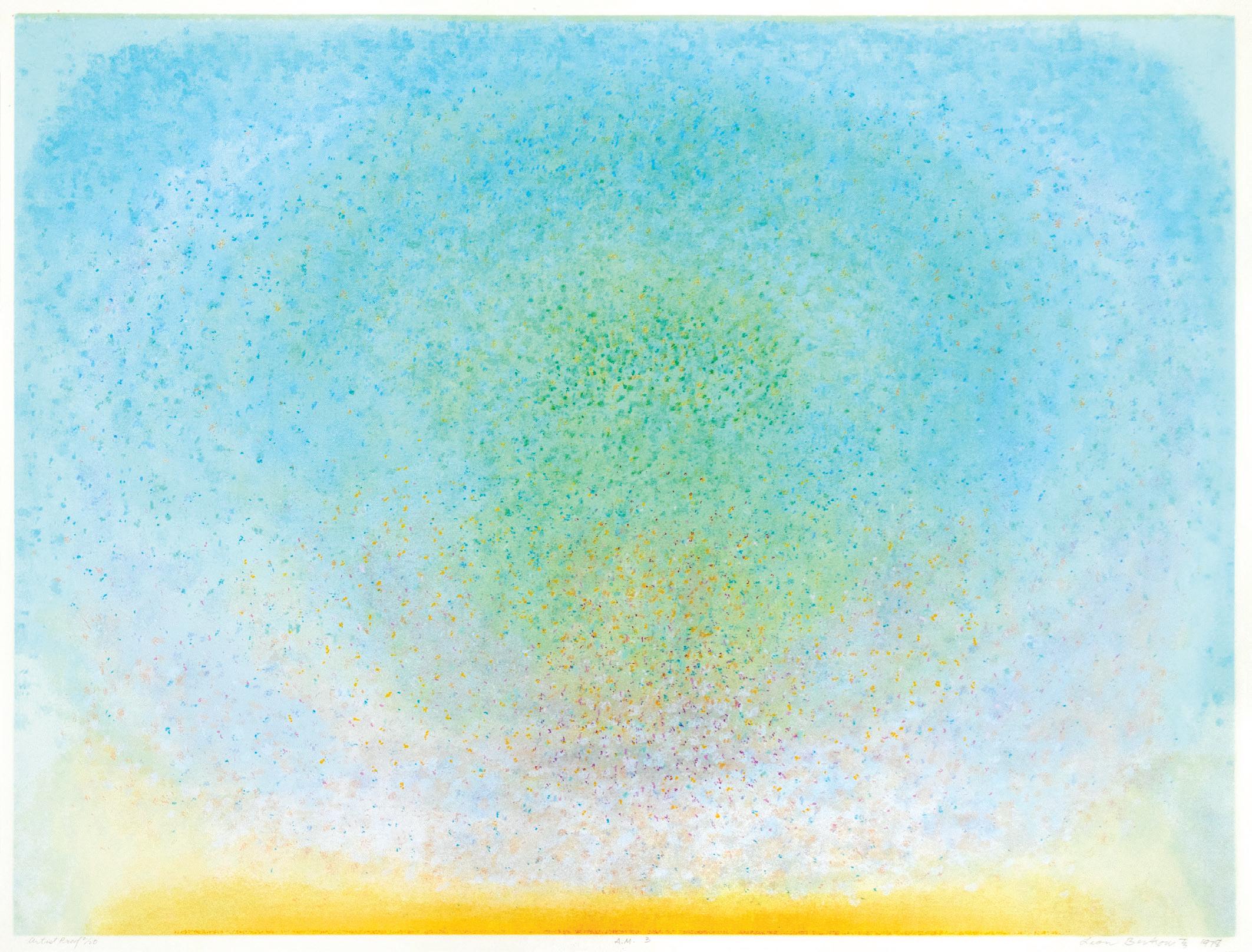
The Country, a Wilderness Unsubdued, 2014 collage and stickers
Collection of Beverly and Christopher With

K House, 1998 painting on monotype ground
Collection of Jenny and David Freestone

Thought Exercise VI, 2019
graphite
Collection of Beverly and Christopher With

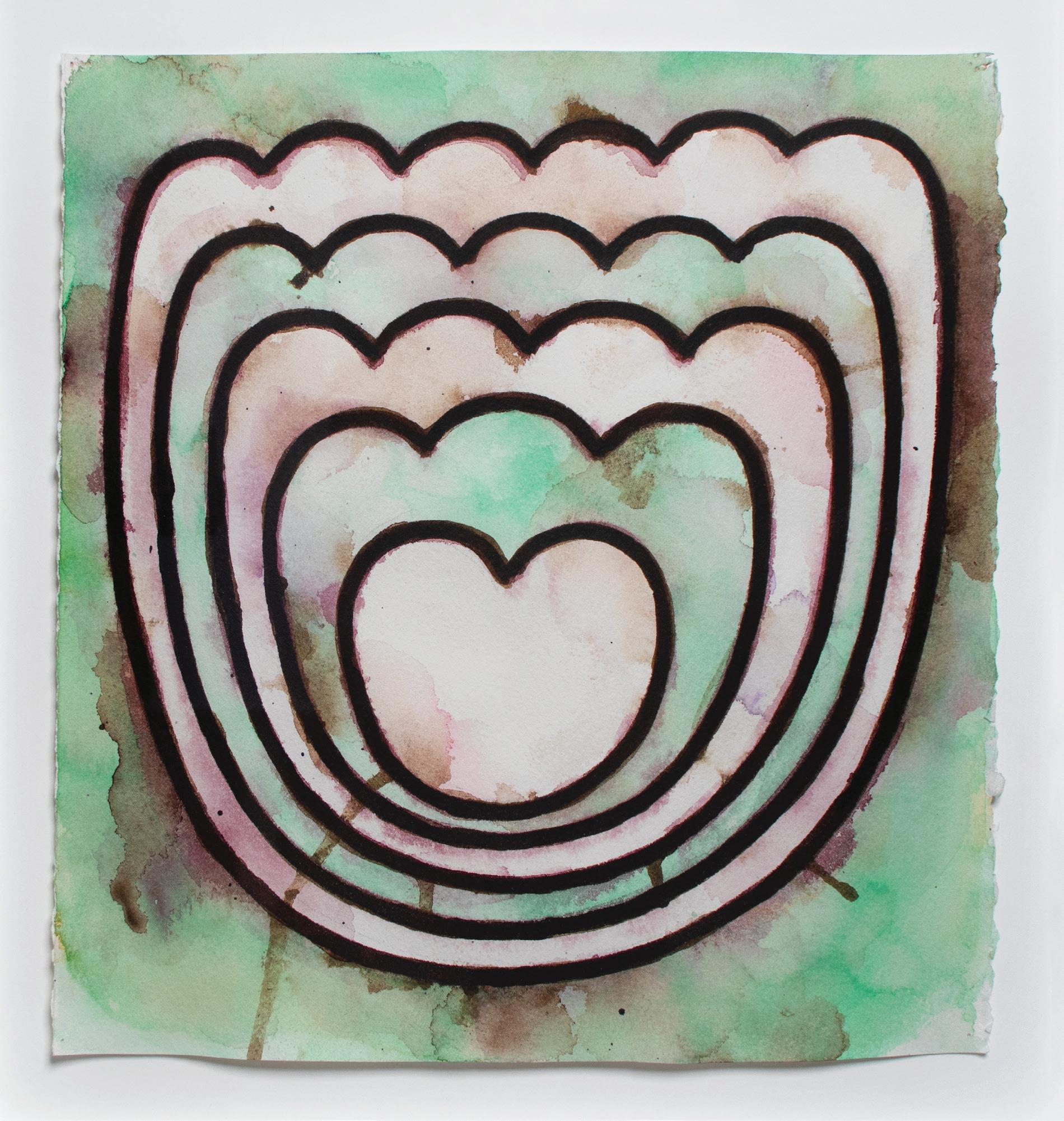
Untitled (GD1340), 1981
felt-tip pen
Collection of Christine Neptune and Robert Brown


Walking Around in Two Worlds, 2021
Collection
Helen C. Frederick

Santos, 2016 digital print
Collection of Robert Roche and Nancy Hirshbein
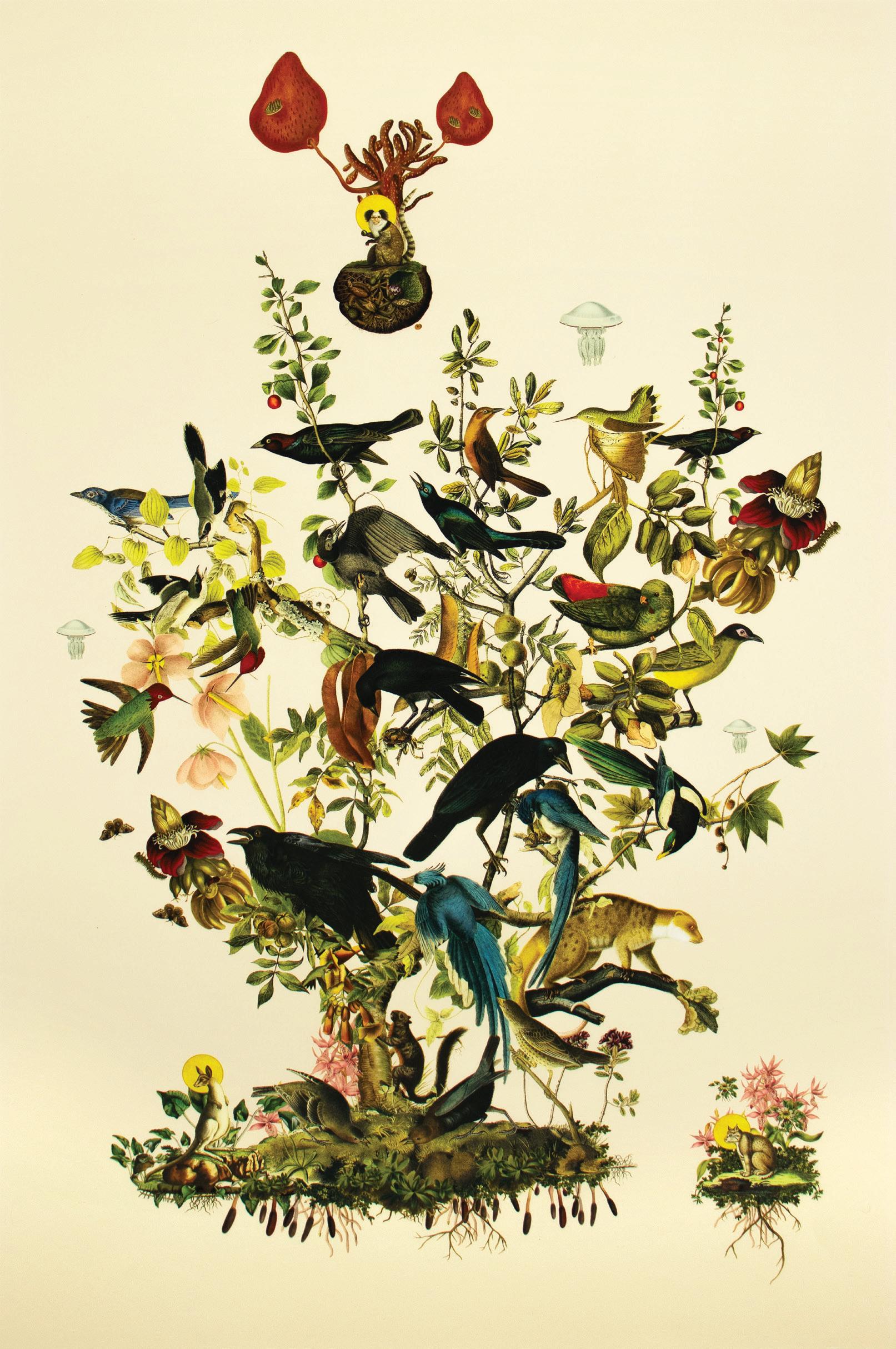
Untitled (Study for Linea), 2020
mixed media
Collection of Philip Barlow and Lisa Gilotty


Art and Influences, 2022
linocut with photograph and chine collé
Collection of Juanita and Mel Hardy

Untitled, 1971 watercolor on handmade paper

Squaring the Circle II, #5, 2019 screenprint
Collection of Mary E. Stockton and Eve Stockton


Gulls, 2006
screenprint
Collection of Karen Drewes Seibert

Collection of Beverly and Christopher With

Untitled, from the Alta series, 1971 color pastel
Collection of Bob Stana
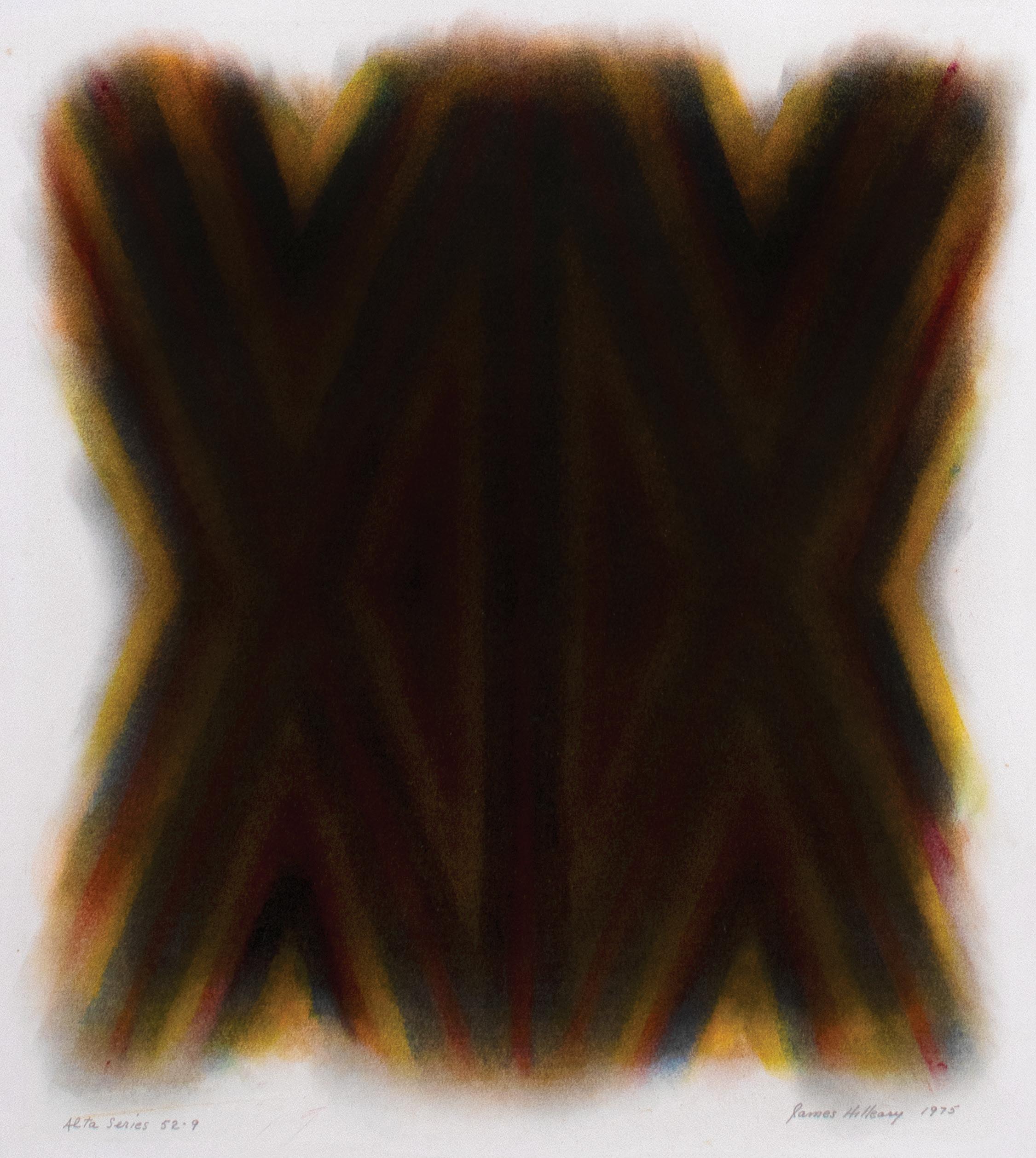
The Split Tale’s Tale, 2010 colored pencil, acrylic, and screenprint
Collection of Philip Barlow and Lisa Gilotty

Untitled, 1991
lithograph, woodcut, and chine collé
Collection of Robert Roche and Nancy Hirshbein

Untitled (Dancers with Band), 1996 silkscreen
Collection of Cheryl Edwards

Autumnal, 1978
monotype
Collection of Andrew Robison

California Still Life, 1983 lithograph

Untitled, 2018 lithograph
Collection of Brigitte Reyes and Lawrence Mills Davis

Milestone, 2005 ink and acrylic

Six Frozen Treats (After Dine), 2023 intaglio
Collection of Susan J. Goldman


Afro-Cosmonaut/Alien (White Noise), 2009
digital photograph
Collection of the Joette James Estate

Red Marks in the Wall, 2006 giclee print
Collection of Mary Welch Higgins and Jay Townsend
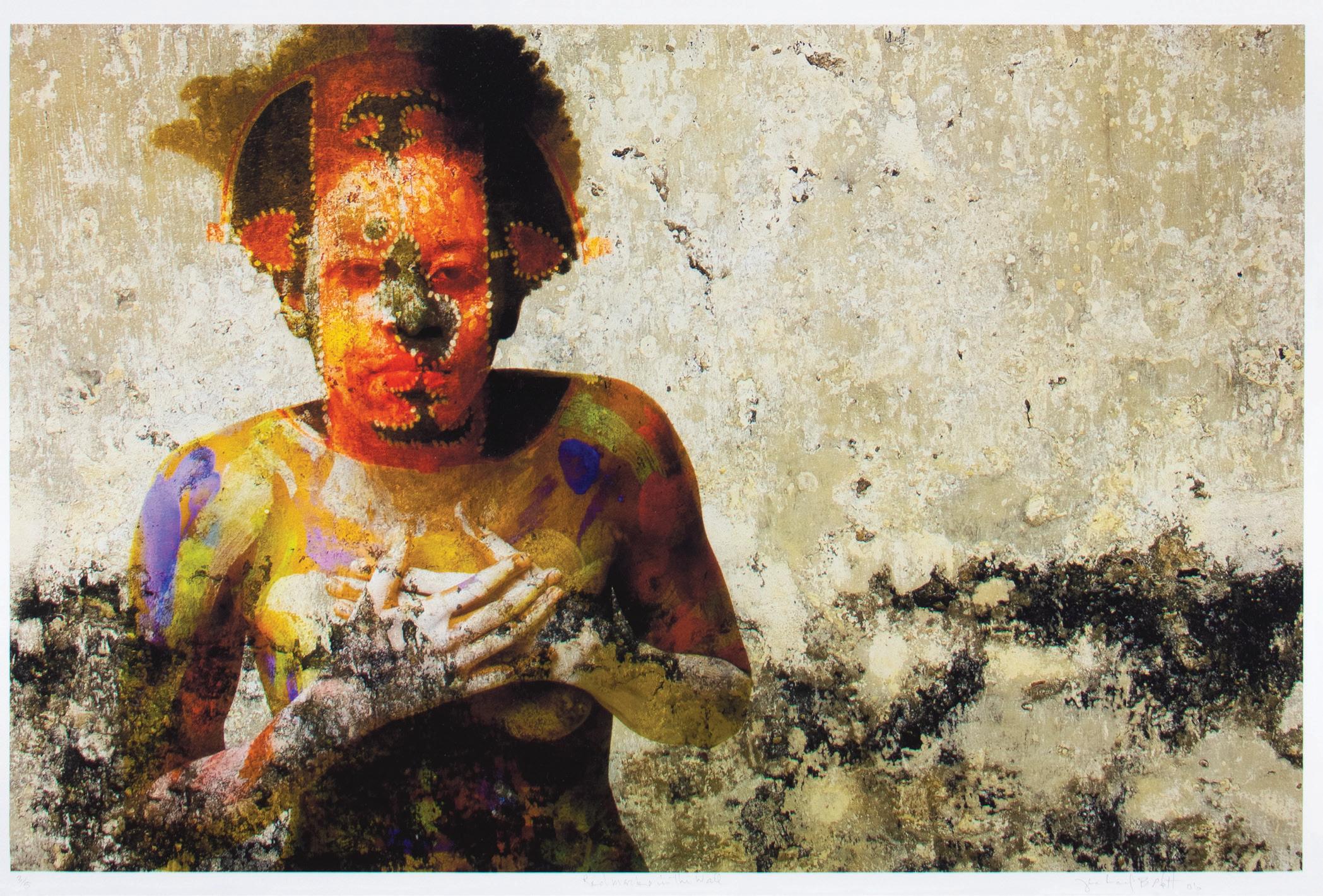
Fan Wall with Feathers, 2018
stamp print, acrylic, ink, and graphite
Collection of Rosemary Feit Covey

Nightscape with Fog, 2000 watercolor, graphite, conté crayon, pen, and ink
Collection of Michele Montalbano

Off the Dome, Sicker Than Your Average, 2006
acrylic and gold leaf
Collection of Walter Ochinko and Tim Christensen

Breeze on Clouds, 2009-2010 photopolymer monoprint with silkscreen Collection of Randi Reiss-McCormack
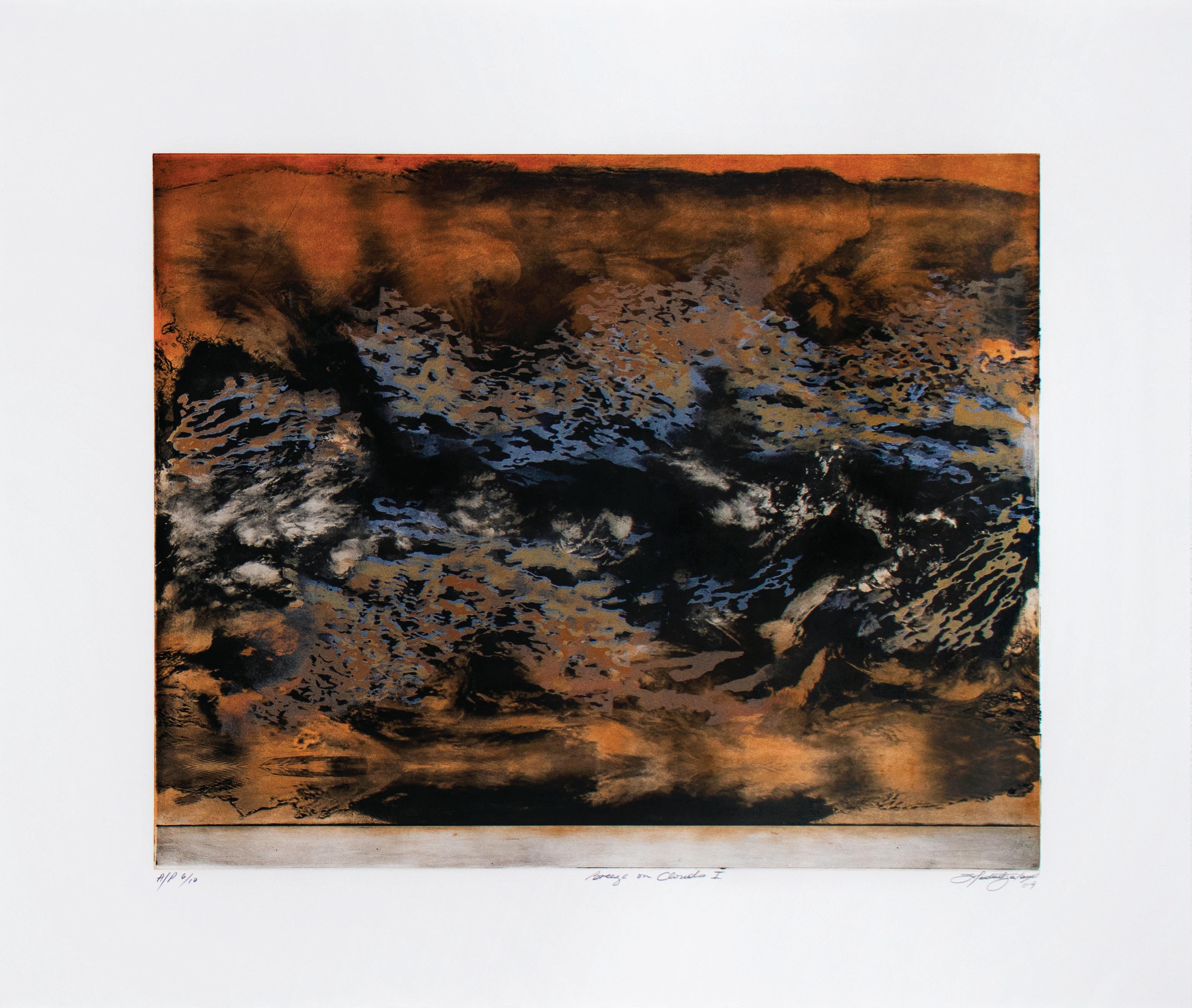
Obamalicious, 2012
monoprint and solar plate etching
Collection of Soledad Salamé


Two, 2018 ink, graphite, and gouache on handmade paper
Collection of Mary Welch Higgins and Jay Townsend

of eer, 2015 graphite on paper

Collection of Susan J. Goldman

4 Cowrie Shell Reading, 2019 mixed media and collage on handmade paper
Collection of Beverly and Christopher With

The Amen Corner - Federal City College 1968, 1970 silkscreen poster
Collection of Melissa Fast

Scottsboro Limited, 1932
lithograph Collection particulière

Clarice in Red, 2010
archival print
Collection of Joan and Bruce Weber

Collection of Christine Neptune and Robert Brown

Bell Canto, 2005
ink and colored pencil
Collection of the Joette James Estate
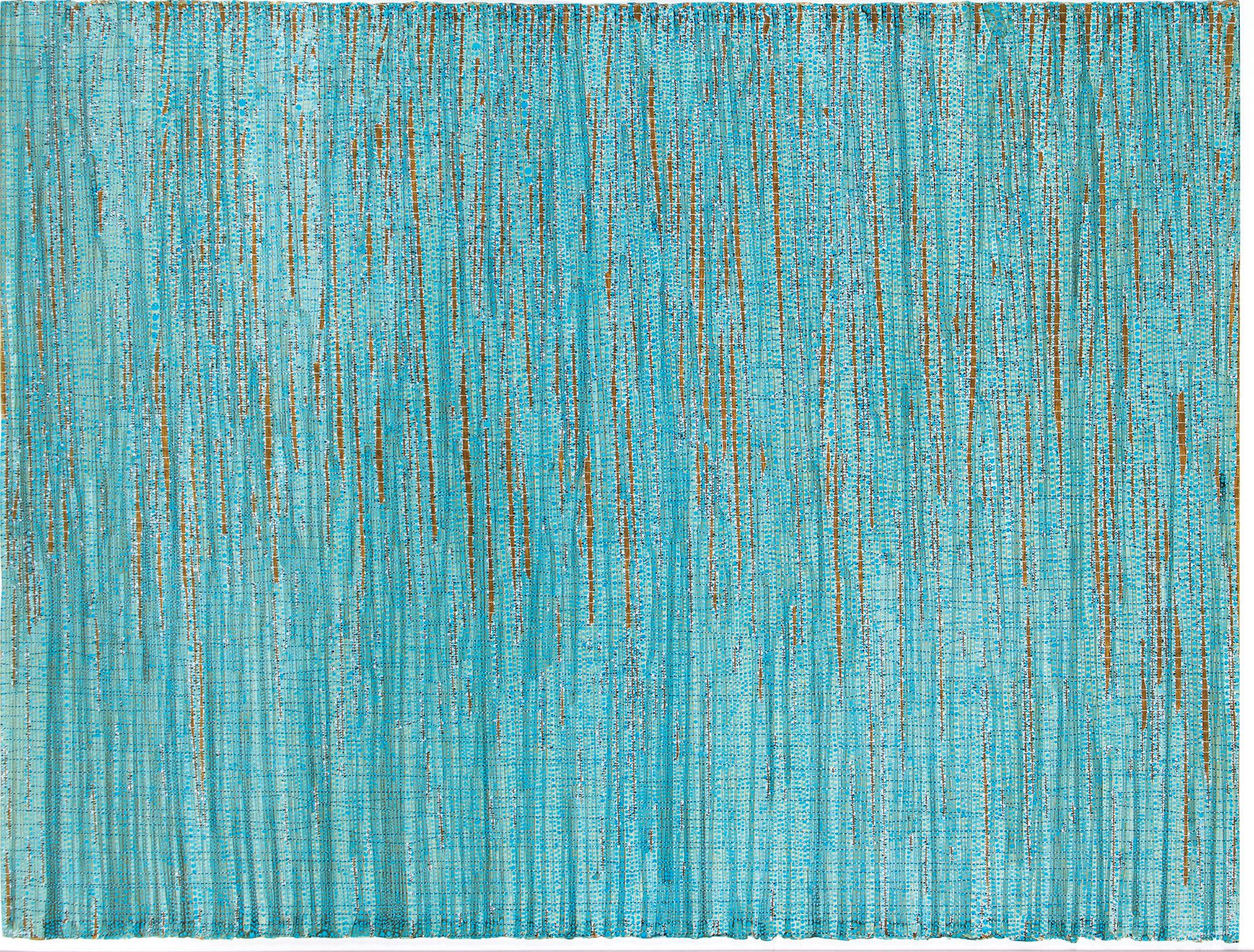

Model Citizen (Head), 2012
archival pigment print
Collection of Joan and Bruce Weber

A Day in Flight, Series 13, 2016 gouache and sumi ink
Collection of Robert Roche and Nancy Hirshbein

All Hands to a Crude Gathering, 2021
archival pigment print
Collection of Cheryl Edwards
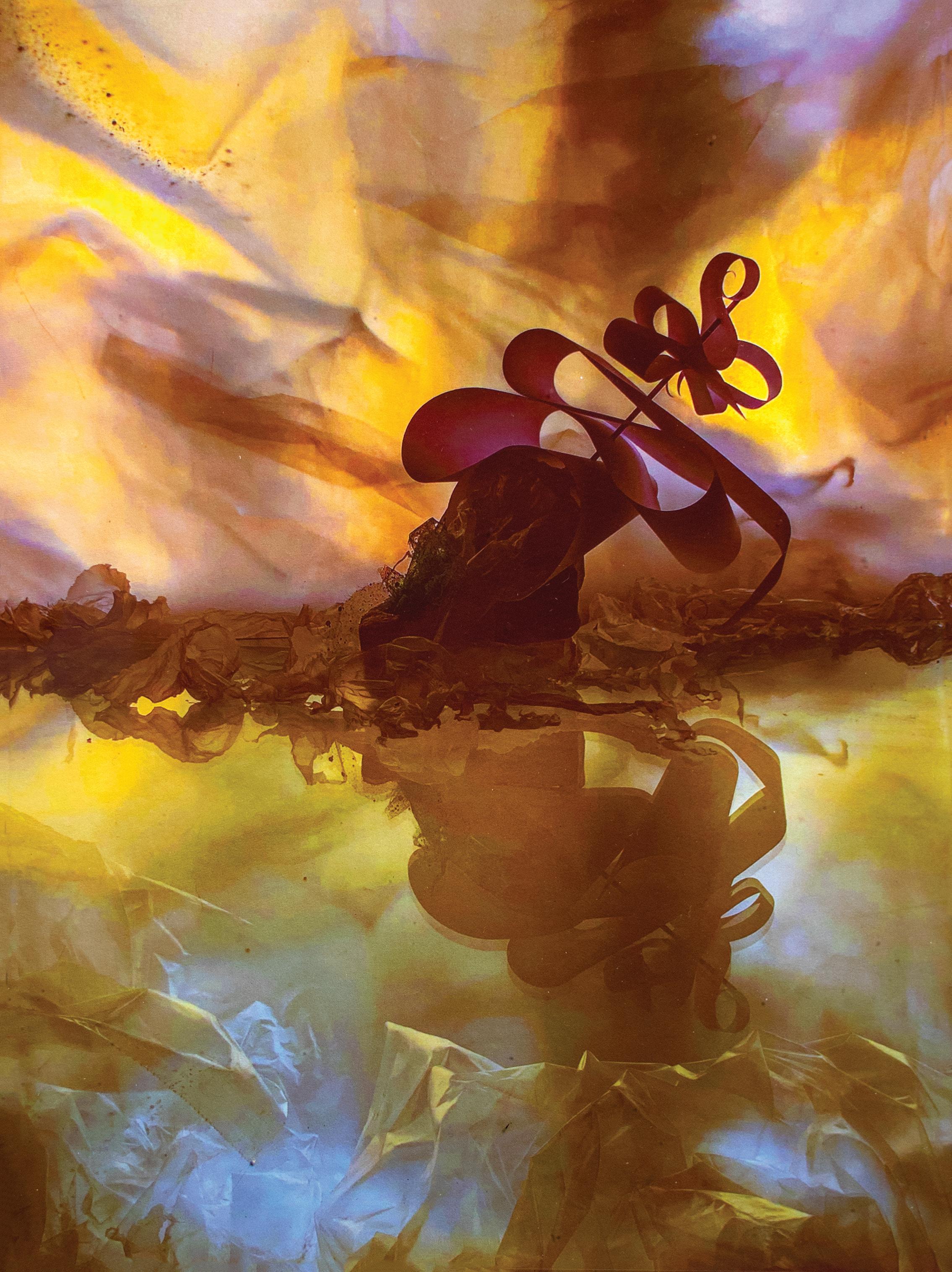
The DMV Collects the DMV
The Kreeger Museum
Washington, DC
October 26th, 2024–February 1st, 2025
Published in the United States by The Kreeger Museum
2401 Foxhall Road NW
Washington, DC 20007 www.kreegermuseum.org
Helen Chason, Director
Laura Roulet, Guest Curator, The Washington Print Club
Katherine Capristo, Head of Communications
Image Captions: Cover: Tom Green, Message. 2008. Screenprint. Collection of Brigitte Reyes and Lawrence Mills Davis.
Image Credits:
AllimagesarecreditedtoKristoferHeng
Copyright © 2024 The Kreeger Museum
All rights reserved. This publication may not be reproduced without written permission from The Kreeger Museum.